Introduction
Color the seasons worksheets offer an incredible way to combine artistic expression with educational learning, helping children discover the beauty and changes that occur throughout the year. These engaging activities transform abstract concepts about seasonal transitions into tangible, colorful experiences that children can touch, see, and create.
Why Color the Seasons Worksheets Are Essential Educational Tools
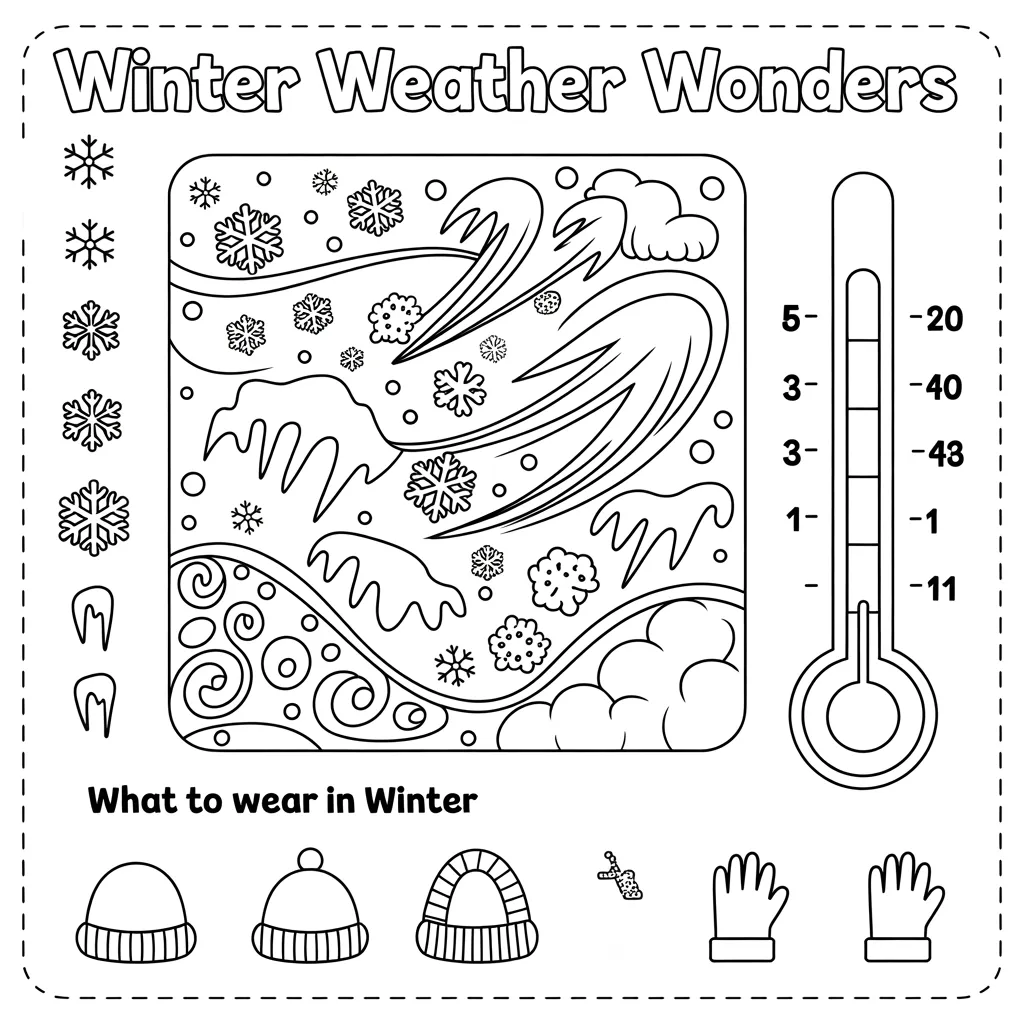
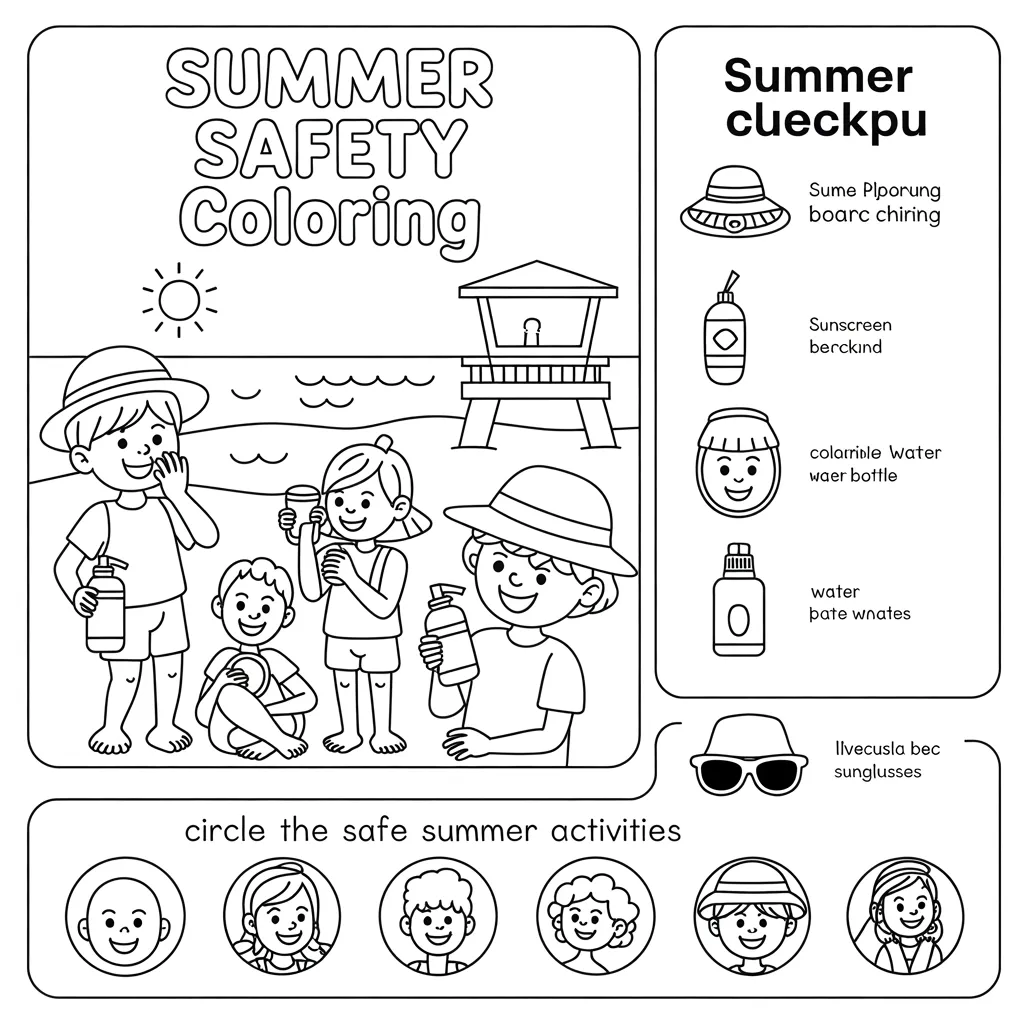
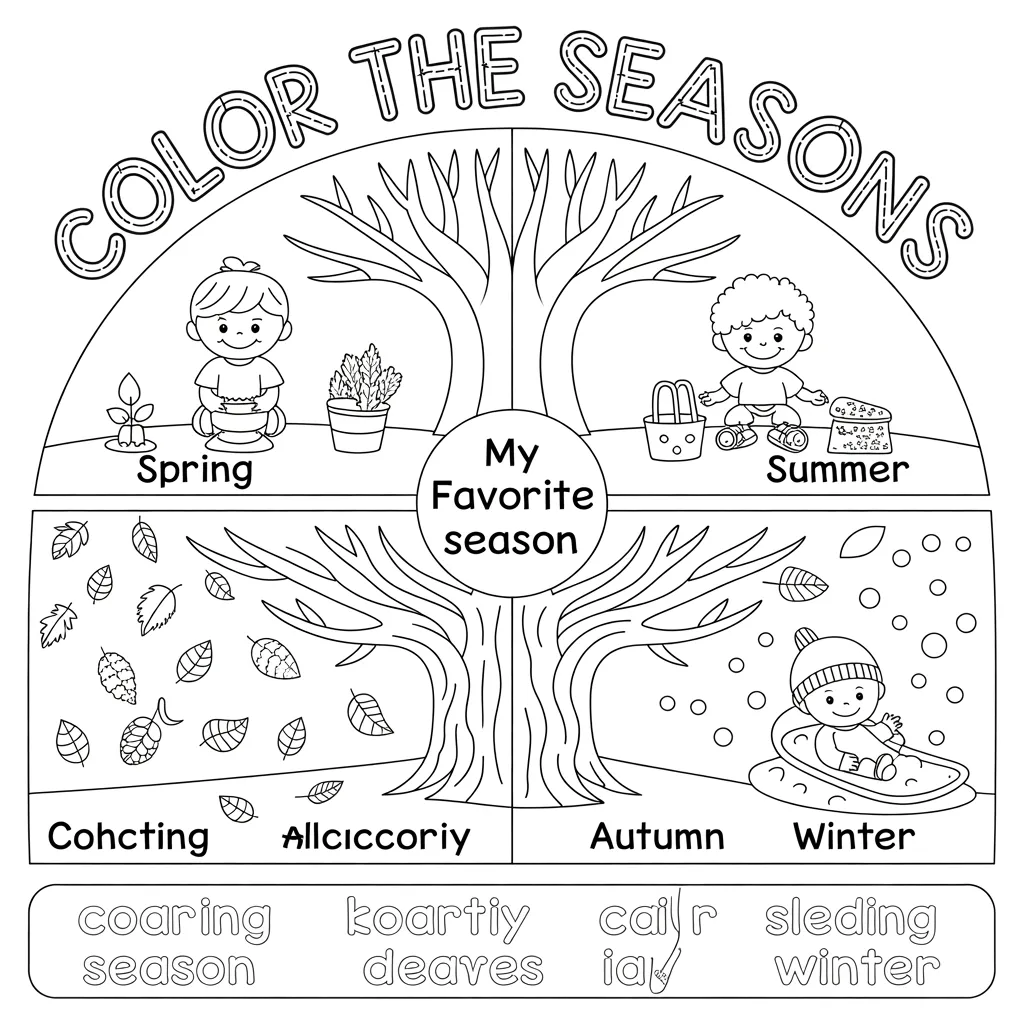

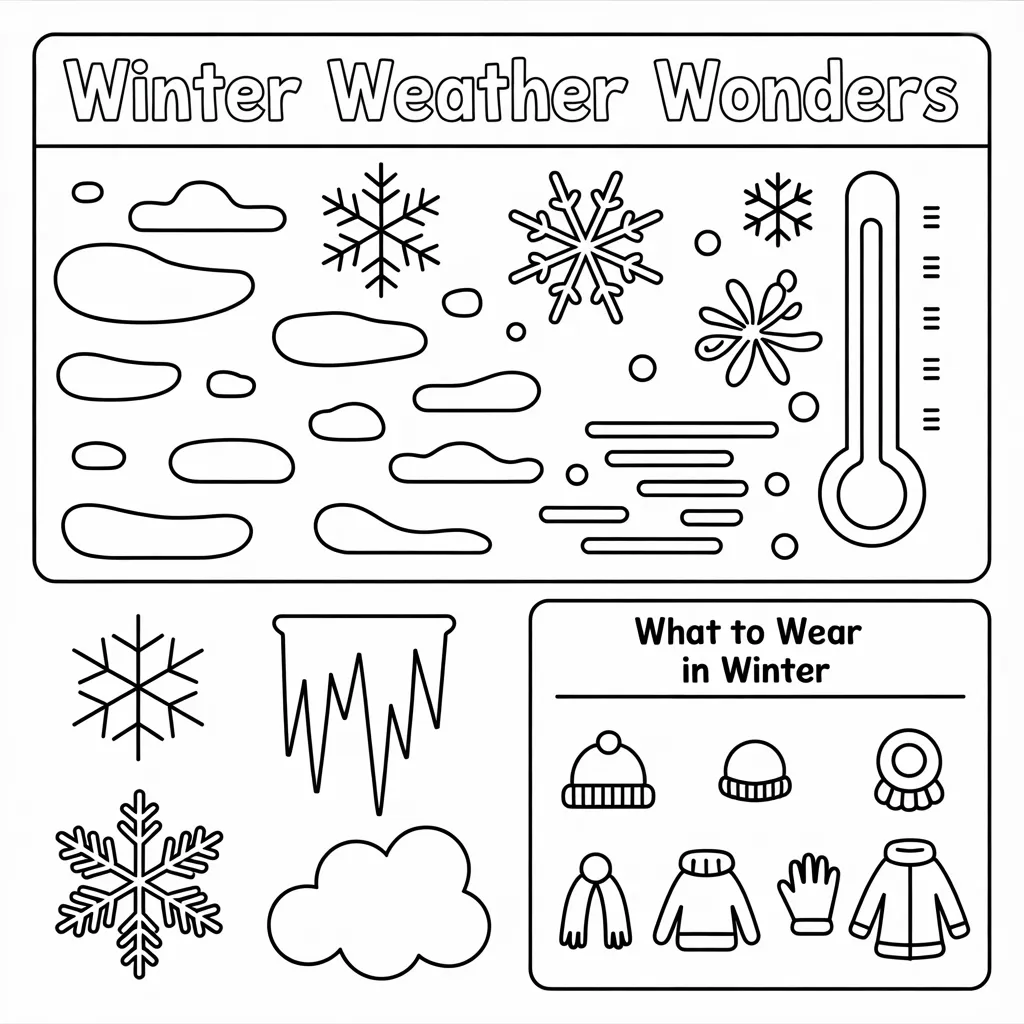
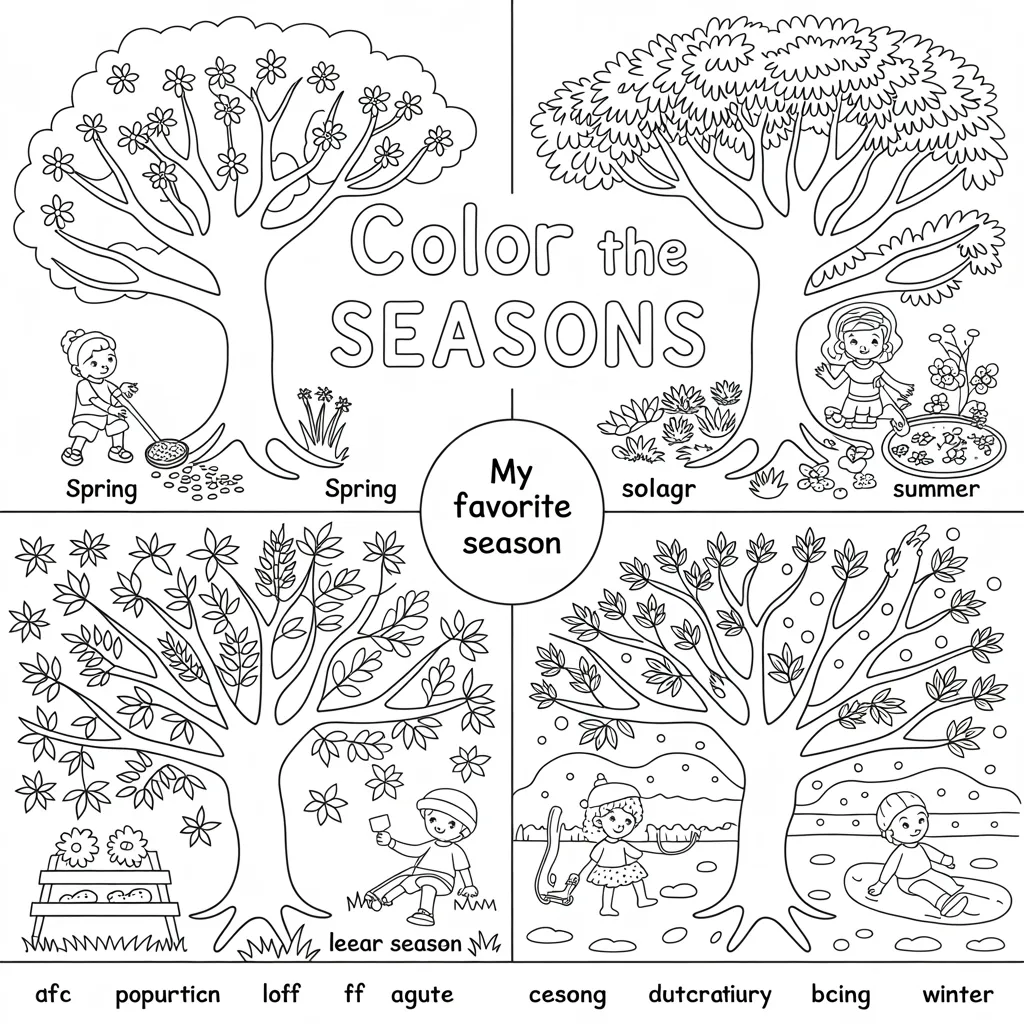
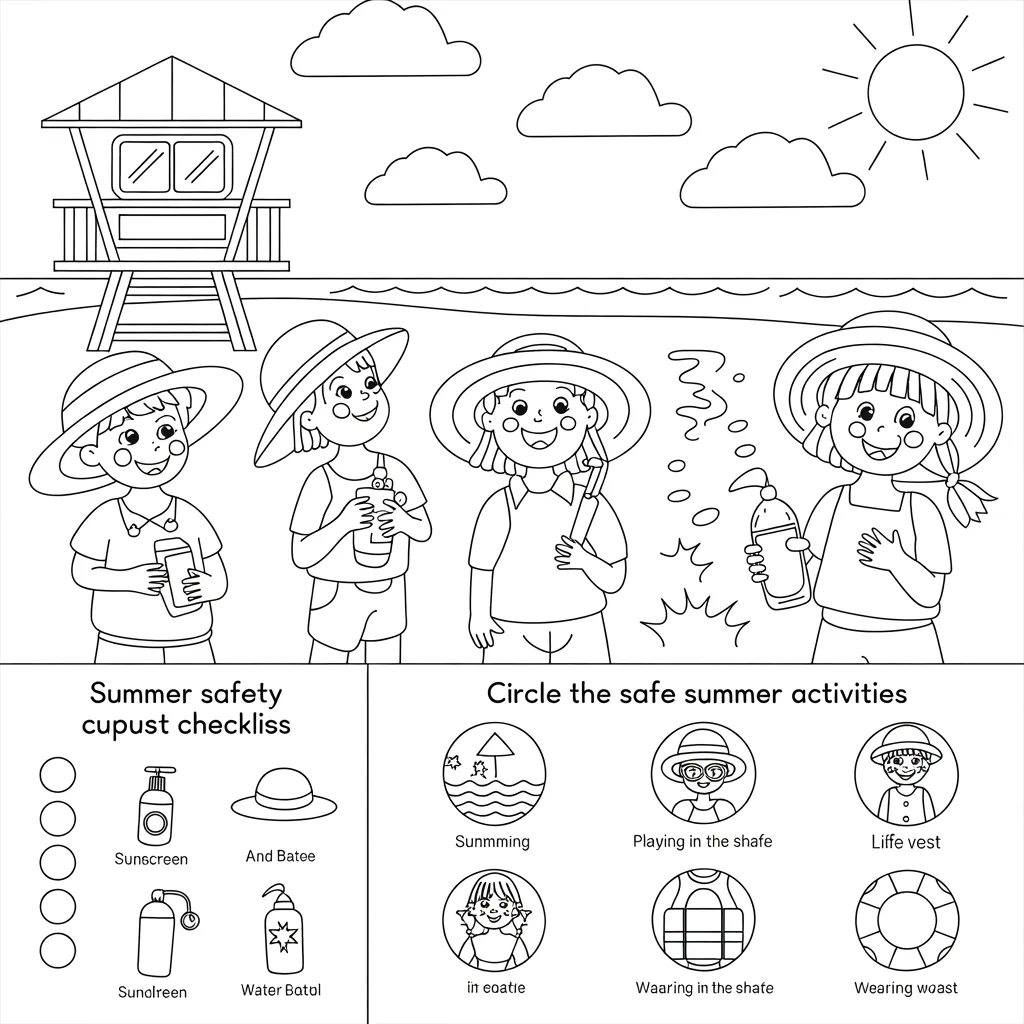
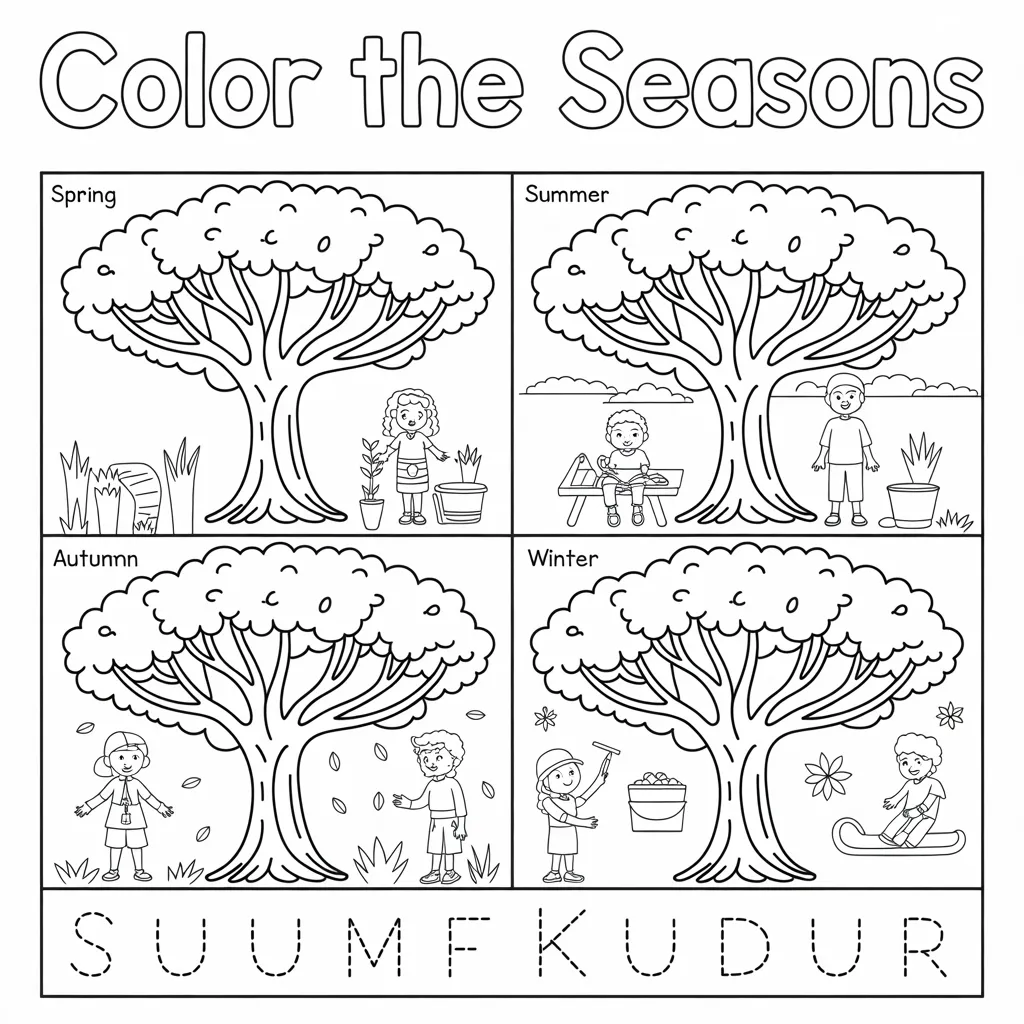
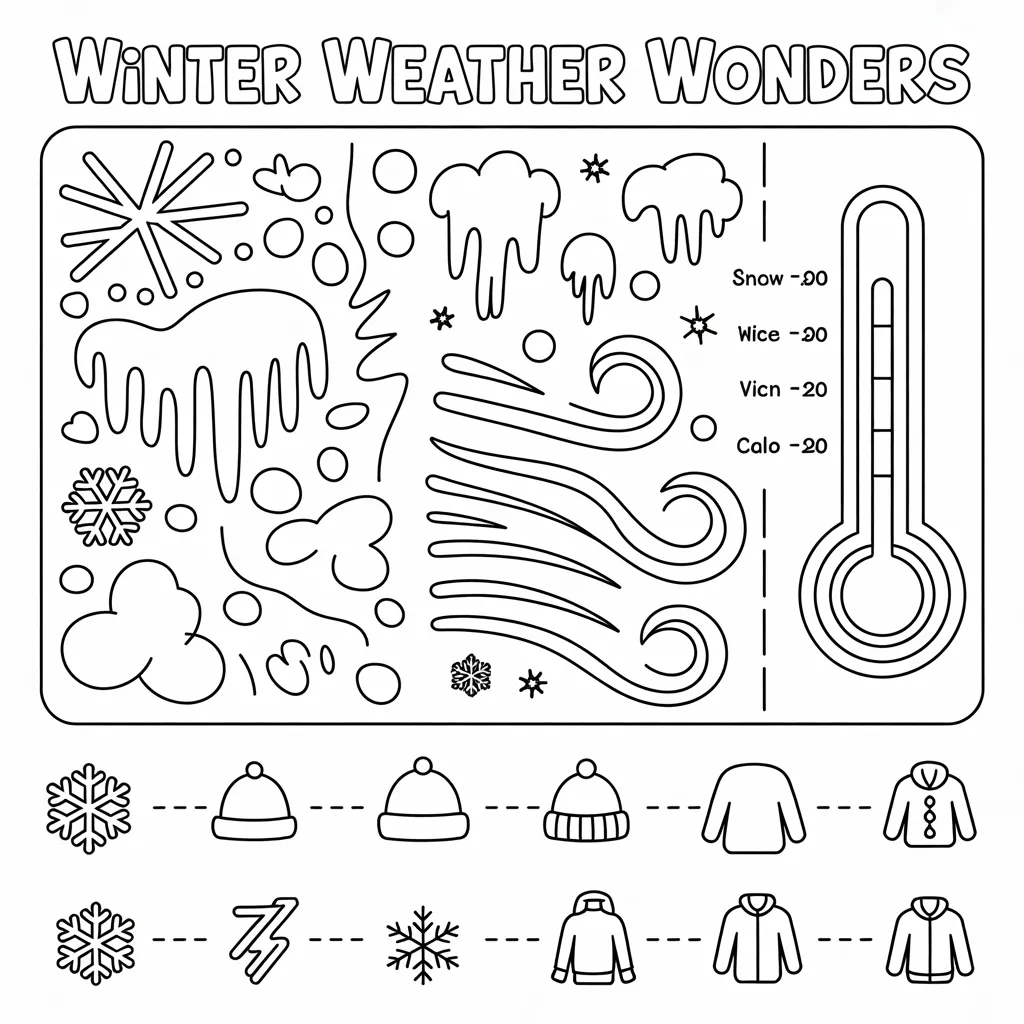
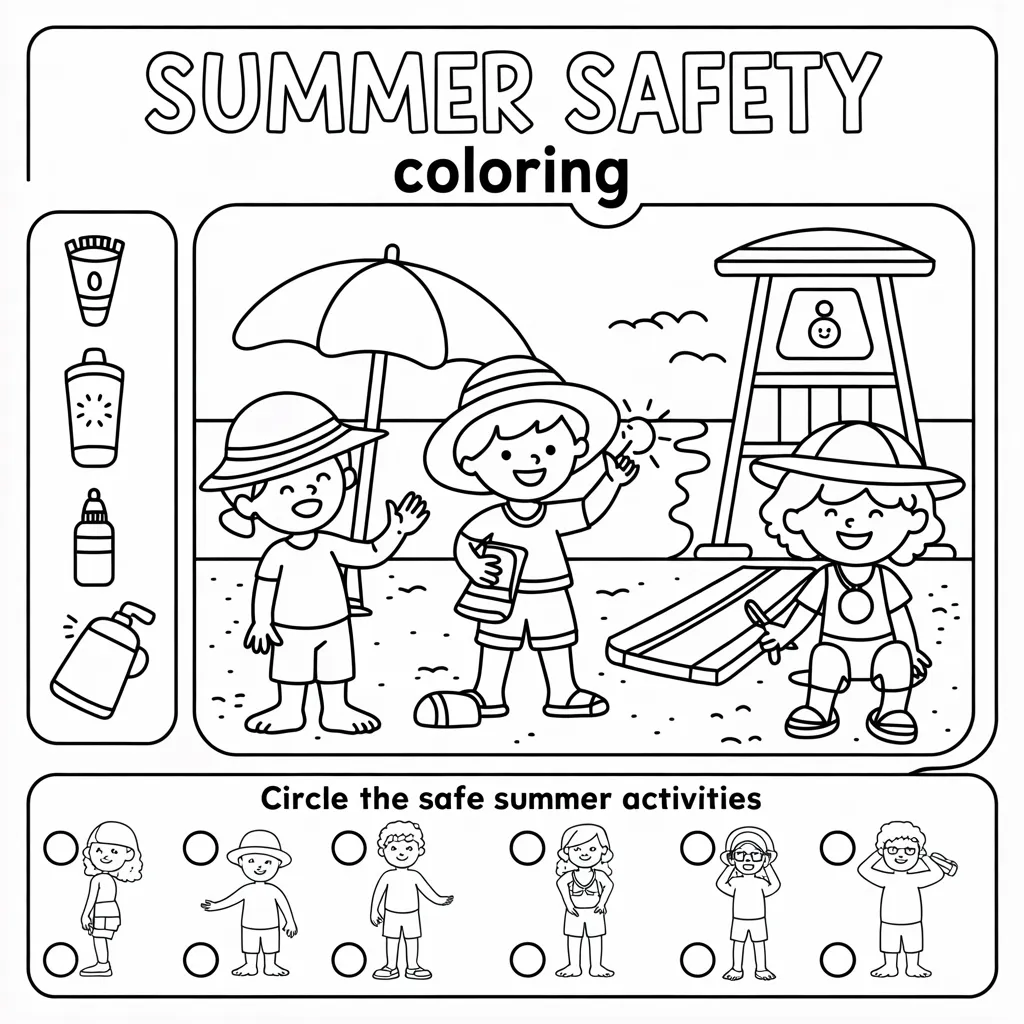
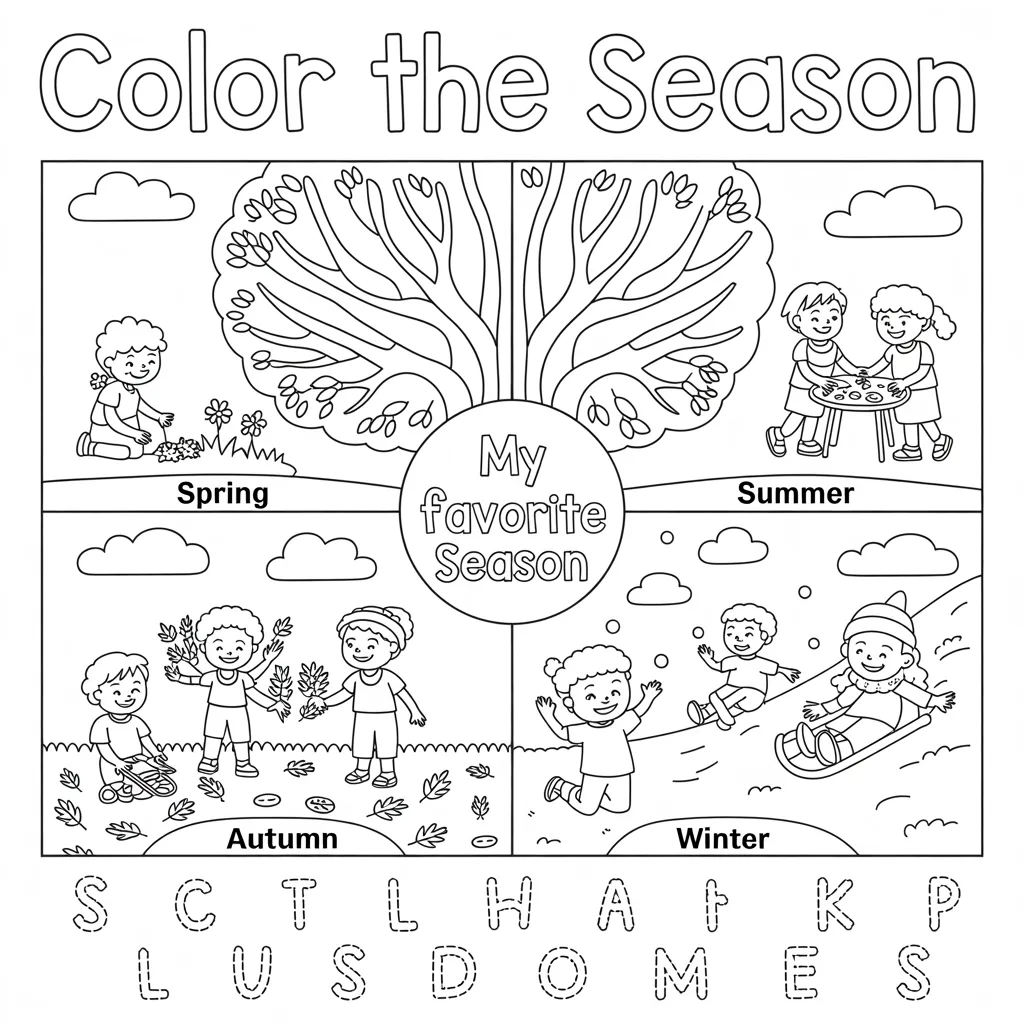

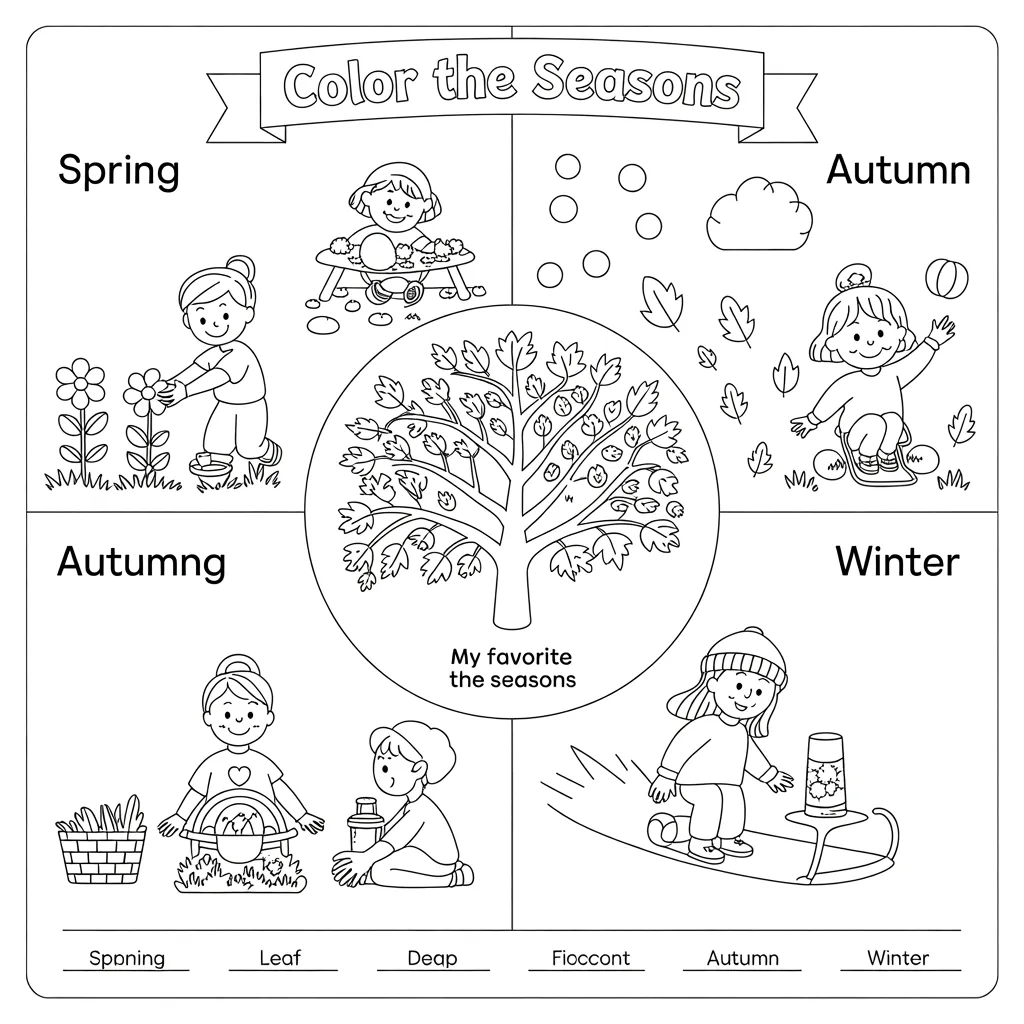
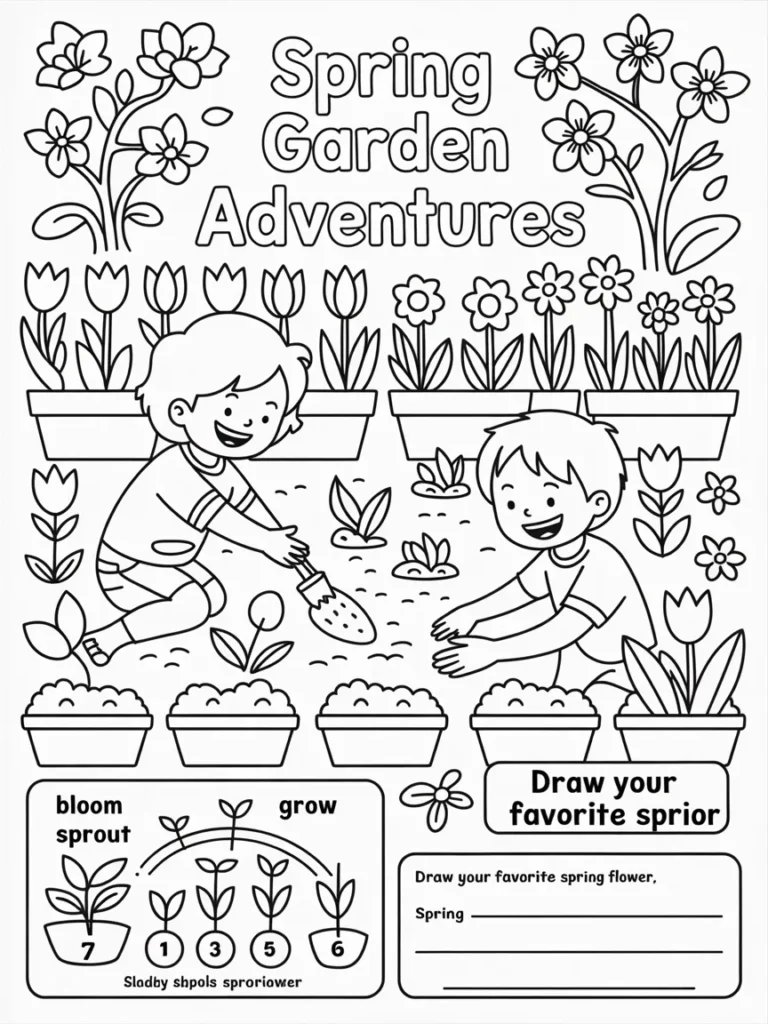
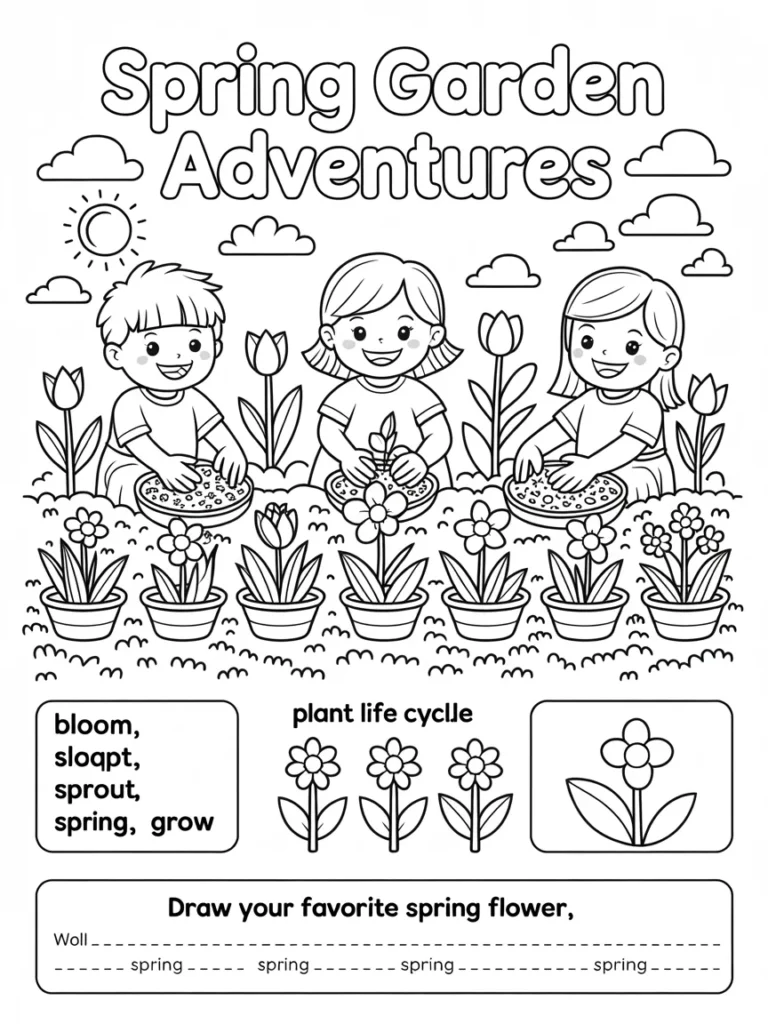
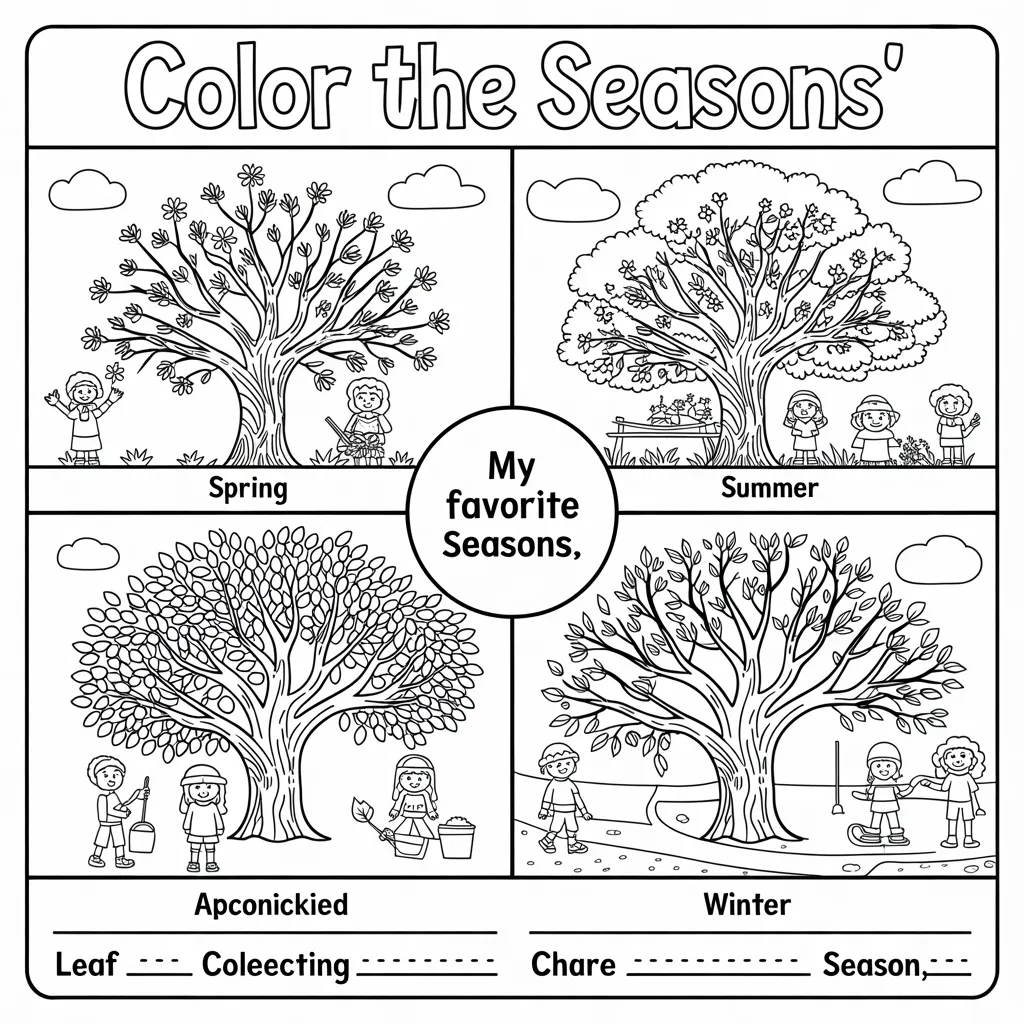
Building Seasonal Awareness Through Art
Color the seasons worksheets serve as powerful tools for developing children’s understanding of natural cycles and environmental changes. When children color spring flowers, summer beaches, autumn leaves, and winter snowscapes, they internalize the visual characteristics that define each season. This hands-on approach helps young learners recognize seasonal patterns, understand weather changes, and develop a deeper connection with the natural world around them.
Research shows that children who regularly engage with seasonal learning activities demonstrate stronger observational skills and better understanding of cause-and-effect relationships in nature. These worksheets provide concrete visual representations that make abstract seasonal concepts accessible to young minds.
Developing Fine Motor Skills and Creativity
The precise movements required for coloring within lines, selecting appropriate colors, and creating detailed artwork help children develop the fine motor skills essential for writing and other academic tasks. Color the seasons worksheets typically feature varying levels of detail, allowing children to progress from simple shapes to more complex seasonal scenes as their skills develop.
These activities also encourage creative decision-making as children choose colors, experiment with different techniques, and add personal touches to their seasonal artwork. This creative freedom within structured boundaries helps build confidence and artistic expression.
Types of Color the Seasons Worksheets for Different Ages
Preschool Seasonal Coloring Activities
For the youngest learners, color the seasons worksheets should feature large, simple shapes and clear seasonal symbols. Spring worksheets might include big flower shapes, summer pages could show simple sun and beach balls, autumn sheets might feature large pumpkins and basic leaf shapes, and winter activities could include snowmen with minimal details.
These age-appropriate designs help preschoolers practice basic coloring skills while learning to associate specific images with different seasons. The simplicity ensures success and builds confidence in young artists.
Elementary School Seasonal Learning Sheets
Elementary-aged children benefit from more detailed color the seasons worksheets that incorporate educational elements alongside artistic activities. These might include seasonal vocabulary words, weather pattern identification, animal migration themes, or plant life cycle illustrations.
Advanced worksheets might feature seasonal clothing comparison charts, weather tracking activities, or scenes that show the same landscape across different seasons. These complex designs challenge developing skills while reinforcing seasonal learning concepts.
Advanced Seasonal Art Projects
Older children appreciate sophisticated color the seasons worksheets that offer artistic challenges and creative opportunities. These might include detailed seasonal mandalas, realistic nature scenes, or complex seasonal celebrations from different cultures around the world.
These advanced activities often incorporate elements of science, geography, and cultural studies, making them perfect for interdisciplinary learning projects.
Creative Ways to Use Color the Seasons Worksheets
Classroom Integration Strategies
Teachers can maximize the educational value of color the seasons worksheets by incorporating them into broader seasonal learning units. Create seasonal bulletin boards displaying completed artwork, use coloring activities as warm-up exercises during season transition periods, or integrate them into science lessons about weather patterns and natural cycles.
Consider creating seasonal coloring stations where children can rotate through different activities, or use these worksheets as quiet time alternatives during busy classroom days. Many teachers find that color the seasons worksheets work excellently as indoor recess activities during challenging weather.
Home Learning and Family Activities
Parents can use color the seasons worksheets to create meaningful family learning time and seasonal traditions. Establish weekly coloring sessions where family members work on seasonal artwork together, create seasonal art galleries in hallways or bedrooms, or use completed worksheets as decorations for seasonal celebrations.
These activities provide screen-free alternatives that engage children productively while supporting their academic development. Many families discover that seasonal coloring time becomes a cherished tradition that brings everyone together.
Educational Benefits of Color the Seasons Worksheets
Science Learning Through Seasonal Observation
Color the seasons worksheets naturally integrate science concepts into artistic activities. Children learn about weather patterns, plant life cycles, animal behaviors, and environmental changes through visual representation and creative expression.
These activities encourage children to observe their local environment more carefully, noting seasonal changes in their neighborhoods and making connections between their coloring activities and real-world observations. This connection between art and science helps solidify learning in both areas.
Language Development and Vocabulary Building
Seasonal coloring activities provide excellent opportunities for vocabulary development and language practice. Children learn seasonal vocabulary naturally while discussing their artwork, describing colors and scenes, and explaining their creative choices.
Teachers and parents can enhance language learning by encouraging children to tell stories about their colored scenes, write descriptions of their artwork, or discuss seasonal memories while coloring. These conversations build both vocabulary and communication skills.
Seasonal Themes and Design Ideas for Color the Seasons Worksheets
Spring Awakening Activities
Spring-themed color the seasons worksheets should capture the energy and renewal of the season. Include flowering trees, baby animals, rain showers, rainbow scenes, and garden activities. These designs help children understand concepts like growth, renewal, and the awakening of nature after winter.
Popular spring themes include Easter celebrations, Earth Day activities, Mother’s Day flowers, and spring cleaning scenes. These worksheets can incorporate cultural celebrations while teaching seasonal concepts.
Summer Adventure Scenes
Summer worksheets should emphasize outdoor activities, warm weather, and vacation themes. Beach scenes, camping adventures, swimming activities, and outdoor games make excellent subjects for summer coloring activities.
These designs help children associate summer with specific activities and weather patterns while encouraging them to think about their own summer experiences and plans.
Autumn Harvest Celebrations
Fall-themed color the seasons worksheets should highlight the harvest season, changing leaves, and preparation for winter. Include pumpkin patches, apple orchards, leaf collecting activities, and cozy indoor scenes.
These worksheets help children understand the concept of harvest time and the natural preparation that occurs before winter arrives.
Winter Wonderland Magic
Winter worksheets should capture both the beauty and challenges of the coldest season. Include snow scenes, winter sports, holiday celebrations, and cozy indoor activities.
These designs help children understand how people and animals adapt to winter conditions while celebrating the unique beauty of the season.
Creating Effective Color the Seasons Worksheets
Design Principles for Success
Effective color the seasons worksheets balance artistic freedom with educational objectives. Include clear seasonal indicators, age-appropriate detail levels, and engaging themes that connect to children’s experiences.
Consider incorporating interactive elements like hidden objects to find, comparison activities between seasons, or space for children to add their own creative elements to the designs.
Adapting for Different Learning Styles
Some children learn best through visual activities, while others benefit from hands-on experiences or verbal discussions. Color the seasons worksheets can accommodate different learning styles by including various activity types within seasonal themes.
Consider creating worksheet series that progress from simple to complex, allowing children to build skills gradually while maintaining engagement with seasonal themes.
Conclusion
Color the seasons worksheets represent one of the most effective ways to combine artistic expression with educational learning, creating engaging activities that children actually want to complete. These versatile tools support multiple learning objectives while providing the creative outlet that young minds crave. Whether you’re a teacher seeking effective classroom activities or a parent looking for meaningful home learning options, seasonal coloring worksheets offer year-round educational value that grows with your child.
Start incorporating these wonderful learning tools into your educational routine today. Watch as children develop stronger observation skills, deeper seasonal awareness, and enhanced creativity through the simple joy of coloring the seasons. The natural world becomes their classroom, and every colored page becomes a celebration of learning.
20 Amazing Color by Numbers Worksheets PDF That Transform Learning Into Fun
Frequently Asked Questions
Q: What age groups benefit most from color the seasons worksheets? A: Color the seasons worksheets work effectively for children ages 3-12, with design complexity adapted for different developmental stages. Preschoolers enjoy simple seasonal shapes, while elementary students engage with more detailed educational content integrated into their coloring activities.
Q: How can teachers integrate color the seasons worksheets into curriculum requirements? A: These worksheets easily support science standards for weather and seasons, art education requirements, and language arts vocabulary development. They work excellently for interdisciplinary lessons combining art, science, and social studies concepts.
Q: Are there benefits to using color the seasons worksheets year-round? A: Yes! Using seasonal worksheets throughout the year helps children develop stronger understanding of natural cycles, improves their ability to observe environmental changes, and creates anticipation for upcoming seasonal transitions and celebrations.
Q: How can parents make color the seasons worksheets more engaging at home? A: Create seasonal art displays, connect coloring activities to outdoor nature walks, use completed worksheets as decorations for seasonal celebrations, and encourage children to share stories about their colored scenes with family members.
Q: What materials work best with color the seasons worksheets? A: Crayons, colored pencils, and washable markers all work well. Consider providing various coloring tools to let children experiment with different techniques and effects, enhancing their artistic experience and creative expression.
